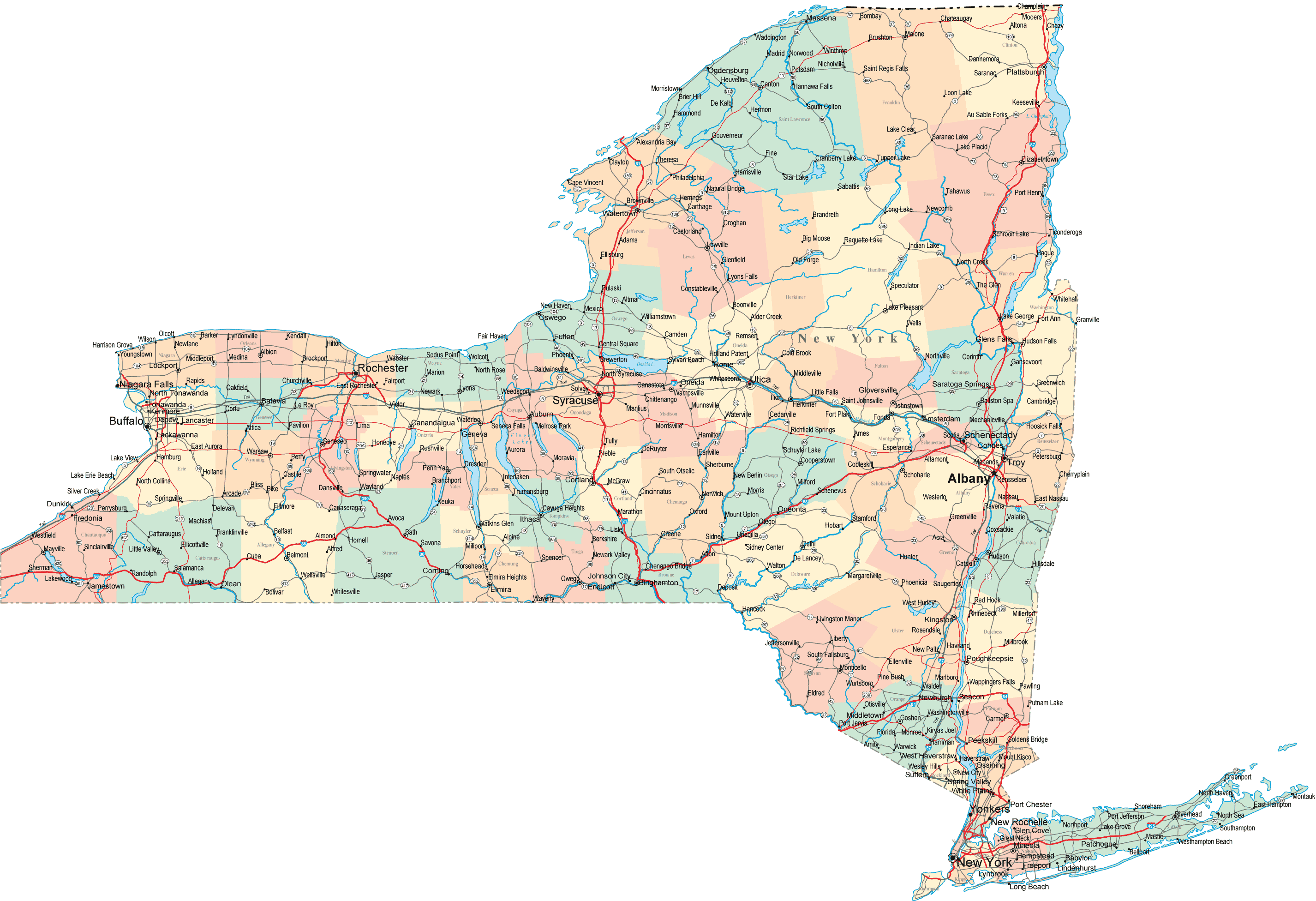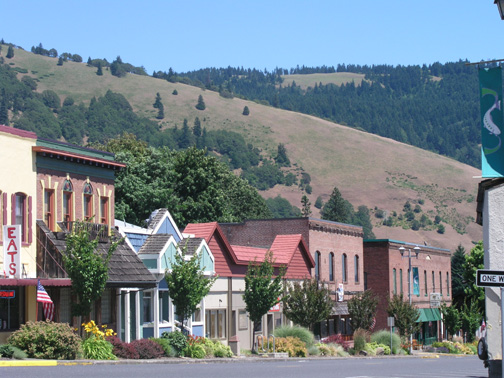Blue Highways: Somewhere on the Hudson River, New York
Unfolding the Map
 We have reached what, until the colonists and settlers pushed farther inland, would have been to them the mightiest river of America. Where William Least Heat-Moon (LHM) joins it, you can throw a rock across the Hudson but, eventually it becomes the large expanse of water that traverses the Hudson River Valley and flows past New York City as it mingles with the sea. In this post, I'll look at the Hudson through song, literature and art. To find out where we touch the fledgling Hudson, see the map.
We have reached what, until the colonists and settlers pushed farther inland, would have been to them the mightiest river of America. Where William Least Heat-Moon (LHM) joins it, you can throw a rock across the Hudson but, eventually it becomes the large expanse of water that traverses the Hudson River Valley and flows past New York City as it mingles with the sea. In this post, I'll look at the Hudson through song, literature and art. To find out where we touch the fledgling Hudson, see the map.
Book Quote
"Our beginnings do not foreshadow our ends if one judges by the Hudson River. A few miles east of the Bad Luck Ponds, the Hudson came down between the ridges to race alongside route 28; it was a mountain stream: clear, cold, shallow, noisy. A few miles from its source in Lake Tear-in-the-Clouds a mile up on Mount Marcy (the Indian name for the mountain is better: Tahawus, 'Cloud-splitter') and three hundred river miles from the thousand oily piers of Hoboken, Weehawken, and Manhattan, here it was a canoer's watercourse. Above the little Hudson, spumes of mist rose from the mountains like campfire smoke."
Blue Highways: Part 8, Chapter 7
 The Hudson River right where it joins route 28 in New York. Photo by "swisstek" and hosted at Panoramio. Click on photo to go to host page.
The Hudson River right where it joins route 28 in New York. Photo by "swisstek" and hosted at Panoramio. Click on photo to go to host page.
Somewhere on the Hudson River, New York
I remember the first time I saw the Hudson River. By seeing the Hudson River, I mean really seeing the river, not the part that flows past the "thousand oily piers" between Manhattan and New Jersey. I was in my late 20s, I think I would hazard, and had driven out to Yonkers, New York from Milwaukee on a work-related trip. I had a couple of people with me, and I had worked out with them, on our trip back, to stop in Cooperstown, New York to visit the Baseball Hall of Fame, then stop at one of my companion's home in Geneva, New York in the Finger Lakes area, and then cross at Niagara Falls, head across Canada (basically LHM's route in reverse) to Detroit where we would stay at the home of my second companion before heading back to Milwaukee.
Our initial drive out of Yonkers was as you'd expect from the New York City region - a lot of interstates. We planned to take the interstate straight north up the Hudson and then connect with another freeway going west toward Cooperstown. It was morning, and the sun gave that soft light that only the sun can give when it is a couple of hours old. I remember both of my companions being a little sleepy. I believe there was a moment - I can picture it in my mind though I've probably put a few images together into one idyllic one, where we crested some stretch of interstate and there lay the Hudson, expansive, placid and the water a mix of blue and green. I picture wooded hillsides sloping down to the water. There wasn't much beach, as I remember. In fact, if I wasn't aware that I was driving along the Hudson River, I could have easily mistaken the river for a long, narrow lake - that's how calm the waters seemed to be.
I think that the Hudson is probably one of our great rivers, because it was probably one of the first big rivers that settlers knew when America wasn't even yet a dream in the mind of the colonists. Yet I was surprised. Other rivers are celebrated in well-known songs. The Mississippi has had untold numbers of notes and lyrics written about its entire length, about certain portions of it, about its moods and floods. Literature has been written where the Mississippi is a central character - I'm thinking particularly of Mark Twain's Adventures of Huckleberry Finn. Roger Miller, Johnny Cash, Sam Cooke, Paul Robeson and the Doobie Brothers, among others, have sang about the Mississippi. Other rivers have also taken their central place in art, music and literature. The Missouri River, made famous by Lewis and Clark's journey, for example, has had its moments of celebration. Oh Shenandoah, for instance, was a song that I learned in grade school that has "across the wide Missouri" as part of its refrain. The river has also been celebrated by such musicians as Bruce Springsteen, Carly Simon and Van Morrison. Even lesser known rivers such as the Columbia River, the Kern River, the Red River, the Green River, and the Tennessee River get their due in song.
I tried to find songs that celebrate the Hudson River, but mostly came up empty. I know that there must be some out there, but I couldn't find many that I could use for the musical interlude, though I was happy to see that there was a decent one. However, for one of the United States' great rivers, there seems to be a dearth of songs about it.
Where the Hudson river really shines is in the visual arts, especially paintings. It gives its name to a genre of paintings by artists grouped in what is called the Hudson River School. The paintings of these artists are steeped in the Romantic tradition, in which the Hudson is shown in an idealized fashion as a true wilderness to demonstrate its savage nobility and pristine nature. In the paintings, the majesty of nature is often at odds with humans and their drive to toward resource development, such as this 1866 painting by Samuel Colman called Storm King on the Hudson demonstrates:
 Samuel Colman, Hudson River School. Storm King on the Hudson, 1866. Obtained from Wikimedia Commons.
Samuel Colman, Hudson River School. Storm King on the Hudson, 1866. Obtained from Wikimedia Commons.
In addition, the Hudson River also shines in literature. Some of the earliest American literature, such as the stories of Washington Irving and the Romantic novels of James Fenimore Cooper take place within the environs of the river, and many authors over American history have written about the Hudson and the places it passes.
The Hudson River is also environmentally sensitive. For a few years I worked with religious organizations on shareholder actions around environmental and social concerns. A number of religious groups had filed shareholder resolutions in the past against General Electric, who dumped PCBs into the Hudson River from two of their plants. The river also has concentrations of DDT. The GE plants have since been declared Superfund sites and cleanup continues. In terms of total pollution the Mississippi River dwarfs every other river in the United States in the amount of contaminants in its water, but the Hudson is still rated the 33rd most polluted river in the country. What probably makes it even more polluted is that the Hudson is an estuarial river, in which tidal action from the ocean causes the salt and fresh water to mix, and also causes the river from its mouth to Troy, New York (over 150 miles upriver) to run backwards, and rise and fall when the tide is coming in or going out. Estuaries are very environmentally sensitive, and in the past pollutants, such as raw sewage, from New York City and cities on the New Jersey side of the river polluted that whole, though there have been many efforts from those places to clean up the Hudson River estuary.
The Hudson is one of America's great rivers, and is beautiful to see. While I am surprised that it isn't celebrated more in song, I am not surprised that it holds a magic place in the hearts of those who live and work around and near it. It certainly had a great effect on our art and literature, and to link it to a past post, it was the first part of the inland transportation route completed with the monumental Erie Canal. It deserves its accolades, and our protection.
Musical Interlude
As I mentioned above, I had trouble finding a song for the musical interlude about the Hudson River. Paintings, no problem. Literature, no problem. For some reason, the Hudson doesn't inspire song the way the Mississippi or other rivers do. However, Dar Williams came through with a song about the Hudson, inspired by her residence near it.
Addendum: As I was searching for more information on Dar Williams, I discovered that she has a new song, just released, called Storm King, which is beautiful! This is the mountain in the painting by Samuel Colman that I include above, and she evidently lives near it. Enjoy this serendipitous moment of discovery!
If you want to know more about the Hudson River
Historic Hudson River Towns
Hudson River Foundation
Hudson River Heritage
Hudson River Valley Institute
Hudson River Valley National Heritage Area
Hudson River Watertrail Association
Wikipedia: Hudson River
Next up: Hague and Ticonderoga, New York




 Wednesday, June 13, 2012 at 5:12PM
Wednesday, June 13, 2012 at 5:12PM



